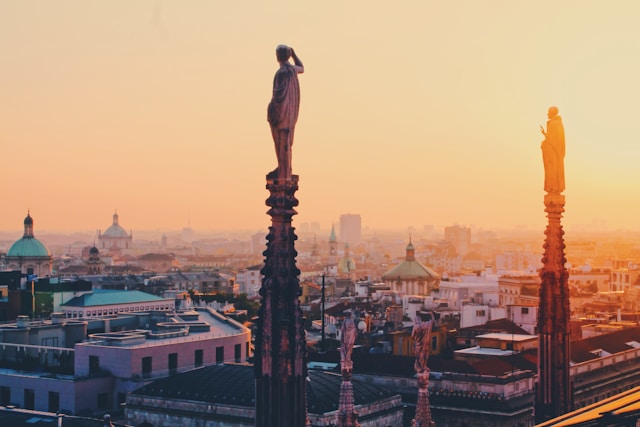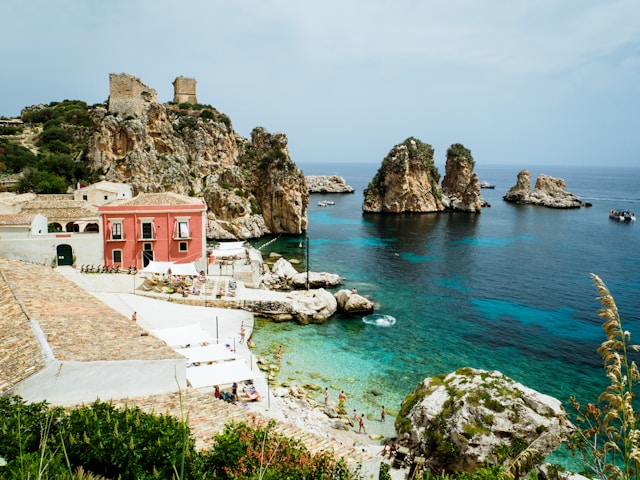Italy has long captured the hearts of travellers with its iconic landmarks and timeless beauty, but it’s the stark contrasts between its regions that make it truly extraordinary. From the misty waterways of the north to the sun-scorched volcanic lands in the south, Italy is a country of rich diversity and unexpected juxtapositions. Every journey here is a voyage through changing landscapes, cultures, and centuries of layered history.
Northern Elegance: Style and Structure in Lombardy and Veneto
Begin in Milan, the fashion capital of Italy and a city where sleek modernity meets age-old elegance. Grand palazzos stand beside shimmering glass towers, and cutting-edge design coexists with Da Vinci’s Last Supper. Milan is a place where trends are born, and yet, it maintains a quiet reverence for the past.
To explore the shifting scenery between Milan and the romantic waterways of Venice, many opt for Milan to Venice train tickets — a seamless way to travel between two of Italy’s most iconic cities. The journey itself becomes part of the experience: as the urban sprawl of Lombardy gives way to vineyard-lined hills and then the gentle canals of Veneto, it’s a lesson in geography and culture all rolled into one. Venice greets you not with roads, but with rippling reflections and the lull of gondolas slicing through narrow waterways.
While Milan stands tall with businesslike precision, Venice seems to float, wrapped in the soft decay of centuries. In Milan, mornings begin with frothy cappuccinos and chic commuters; in Venice, the pace slows, and time stretches like shadows across the Grand Canal.

Southern Heat: Fire Beneath the Surface
Push further south, and Italy reveals an entirely different character. The largest island in the Mediterranean, Sicily pulses with energy drawn from its smouldering volcanoes, Greek ruins, and multicultural heritage. With its mix of Norman cathedrals, Arab-influenced domes, and crumbling Greek amphitheatres, the island feels like a living museum layered with stories from across civilisations.
Those planning tours to Sicily often seek more than just beaches and ruins — they’re drawn to the raw authenticity of the place. Mount Etna dominates the skyline, reminding visitors that the island is constantly evolving, shaped not only by time but by the forces of nature. Local traditions run deep here, from vibrant religious festivals to age-old culinary practices that reflect the island’s unique fusion of cultures.
A trip through Sicily is an experience of sensory extremes — the heat of the sun, the tang of sea air, the scent of citrus groves, and the spice of street food served sizzling from market stalls.
Central Italy: Rolling Hills and Renaissance Brilliance
Heading south into Tuscany and Umbria, the landscape changes once more. Gently rolling hills patched with olive groves and cypress trees frame medieval hill towns. Florence, Siena, and Assisi are steeped in Renaissance glory — places where art, philosophy, and architecture intertwine.
Here, travellers linger. They sip wine where it’s made, wander through cobbled streets, and take in views that haven’t changed in centuries. The towns wear their history proudly, yet there’s a rustic warmth in their everyday life — local markets, family-run trattorias, and festivals that tie the present to the past.
Though the cities and countryside feel far removed from the north’s polished pulse, this central region is often the heart of the Italian dream: art-rich, sun-dappled, and indulgently slow.
Contrasts in Culture and Climate
Italy’s regional divides aren’t only geographical. Climate, cuisine, dialects, and attitudes shift markedly as you travel. In the north, meals tend to be structured and hearty, with rich risottos and butter-based sauces. In the south, flavours intensify: think fiery arrabbiata, sun-dried tomatoes, and an abundance of fresh seafood.
Weather also plays its part. While snow often dusts the Alps and Dolomites in winter, the south remains sun-drenched for much of the year. This variation contributes to distinct regional identities — and fierce local pride. Ask an Italian where the best food or wine comes from, and you’ll likely be treated to an impassioned answer rooted in hometown loyalty.
Even language can shift subtly. While standard Italian is understood nationwide, regional dialects — some almost unintelligible to outsiders — are still widely spoken, adding another layer of cultural texture.
Modern Journeys Through Ancient Lands
Thanks to Italy’s excellent rail and road infrastructure, exploring these varied landscapes has never been easier. The high-speed trains that link the north and central regions are fast and efficient, while local trains and ferries help uncover more remote or coastal areas. Driving can be adventurous, particularly in the south, but it also allows the freedom to reach tucked-away villages and panoramic coastal roads.
Despite its ancient roots, Italy is wonderfully modern when it comes to hospitality and travel. Boutique hotels blend heritage with design, agriturismos offer immersive rural stays, and culinary tours dive into local specialities — whether it’s truffle hunting in Piedmont or street food tasting in Palermo.
A Country of Endless Discovery
Italy’s contrasts are what make it endlessly captivating. It’s not simply one country but a patchwork of regions, each with its own heartbeat. From the shimmering canals of Venice to the dark volcanic earth of Sicily, every corner offers something new, something unexpected.
The real joy of travelling through Italy lies in these shifts — in watching the landscape change from snow-capped peaks to golden coastlines, in tasting the differences between a Milanese espresso and a Neapolitan one, in hearing church bells ring in a Tuscan village one day and the call of a market vendor in Palermo the next.
Italy isn’t meant to be rushed. It asks you to move slowly, to pay attention, to savour. And when you do, you’ll find that its greatest treasures aren’t always its famous landmarks, but the journey itself — one of contrasts, character, and unforgettable beauty.



